Everything under control: Considerations for preparing for a crisis with children
No matter, if natural disasters, diseases, or emergencies: there are many situations where it is important to be well-prepared as a family.
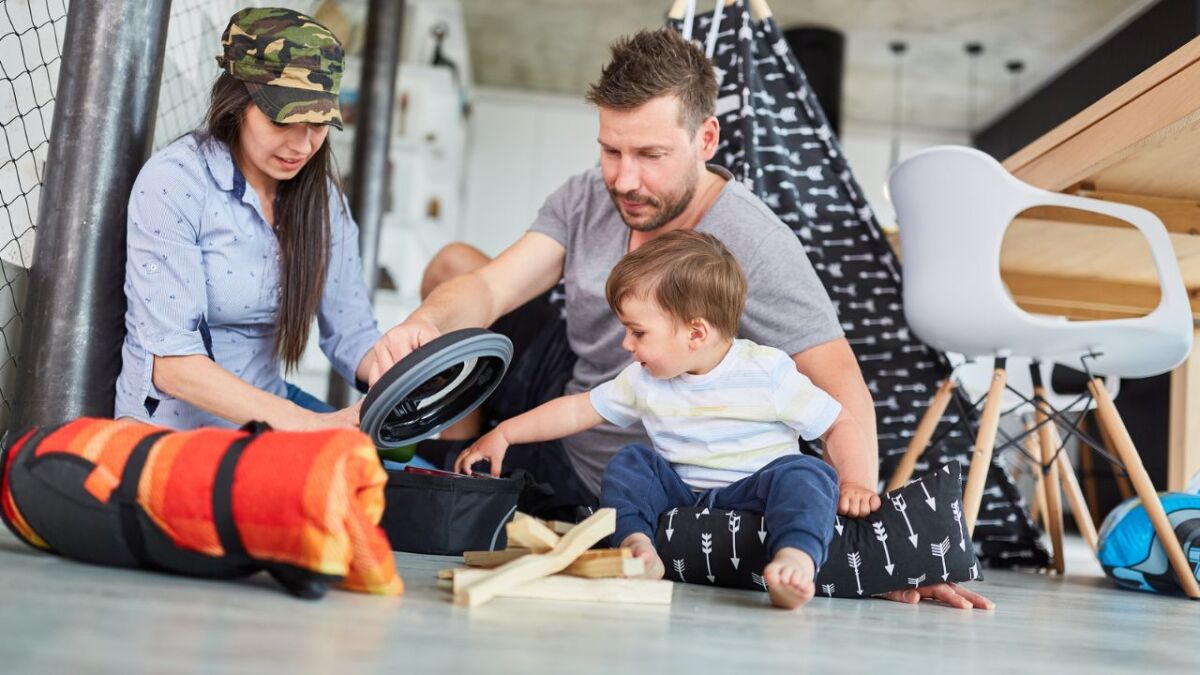

From Martin Gebhardt. Check out my “About me” page.
👉 The key facts from this guide
- Be well-prepared to survive a crisis as a family. An emergency plan is essential.
- Survive crises at home by stockpiling supplies and involving your child in all necessary procedures.
- If you have to flee with children, good preparation is crucial. The mobility and safety of your children have top priority.
- Depending on your child's age, prepare them in different ways for a crisis. Infants and toddlers mainly need security, while teenagers can take on more responsibility.
- Be a rock for your children in times of crisis. They require comfort and security.
- Keep important supplies ready, especially when you're on the run with small children.
Hey, I wanted to talk to you today about a topic that is significant to me: how families with children can best prepare for crisis.
The problem is that a crisis can reach any of us at any time.
Whether it's natural disasters, accidents, or other unforeseen events - you have to react quickly and effectively to protect yourself and your family.
Having an emergency plan as a family is essential.
In this article, I'll show you how to best prepare for crises as a parent with children.
With a few simple precautions and a clear emergency plan, a family can stay protected and capable of action in any situation.
Now let's find out together how to do it.
Surviving a Crisis at Home
I still remember the winter of 2016 well.
I was at home with my children watching a movie when suddenly the heating failed. It got colder, and I checked the heating to find that it actually wasn't working anymore.
Panic immediately set in for me. When will the heating turn back on?
And do you know what happened? The heating didn't run for 3 days.
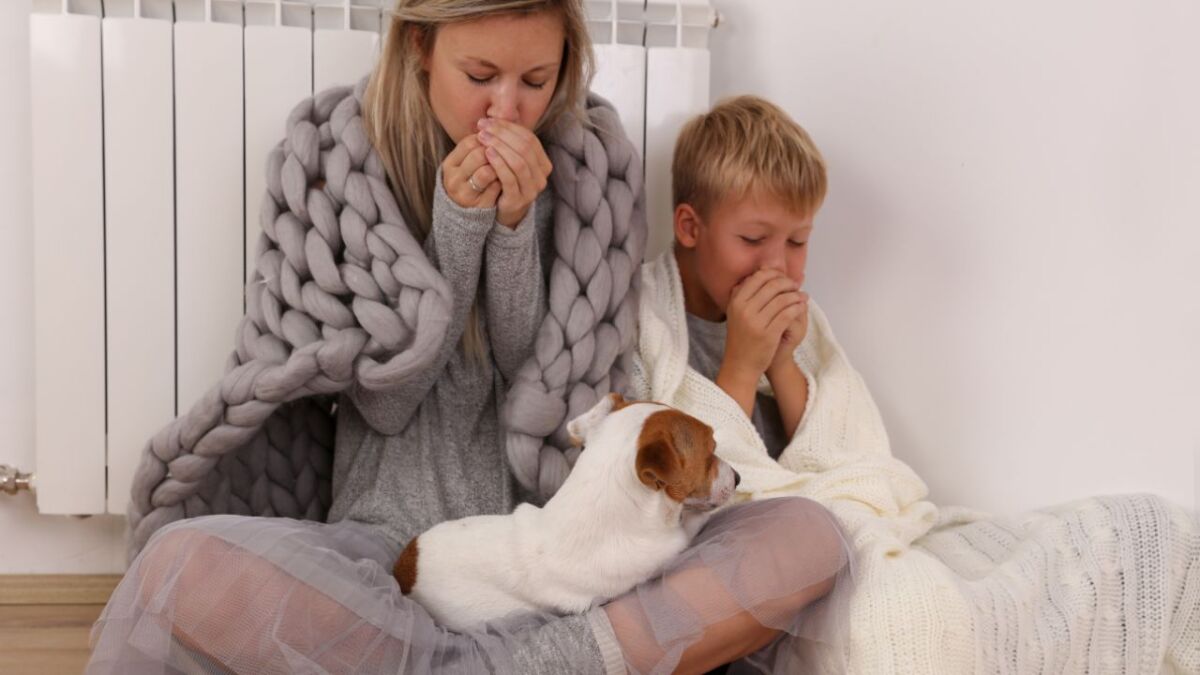
I had to stay strong and try to make the best of the situation. So, we gathered all the blankets we could find. Together with my children, I sat under the blankets and cuddled up to keep each other warm (here I have listed more tips on how to stay warm).
It was cold and uncomfortable, but I remembered that I had stocked up on canned food and noodles. I conjured up a warm meal on the table and we ate together.
It felt like a little adventure, but in truth it was a difficult time.
We spent the next few days together in our cozy nest of blankets. We read books, played games, and told each other stories. It was a difficult time, but we stuck together and made the best of it.
After three long days, the technician finally came and repaired the heating. I breathed a sigh of relief, but I also knew that as a family, we had grown together and had overcome this challenge together.
But what if it's not just the heating, but a disaster strikes?
Stay at home or flee?
Perhaps you know some preppers who swear that Bug Out, which means fleeing, is the only true solution for an SHTF scenario.
In some situations, this may be true, but especially if you have children, it can be a tremendous challenge.
Don't get me wrong: If you have no other choice but to flee, then pack your bags and get out of there with your children as quickly as possible!
However, if you have the opportunity to survive a crisis (such as a gas outage, a power blackout, or a flood) in your four walls with the right equipment (here's my comprehensive prepper list), then stick with this option.
As children also have various needs, here's a little guide for you.

Infants and preschool children - fulfilling basic needs
Realistically speaking, you can't really prepare a baby for a crisis.
You can't involve them in plans or assign useful tasks to support the family.
However, you can already support the little being in growing up quickly and becoming strong.
Depending on whether your baby is still breastfed or not, you should always make sure it gets the food it needs.
Please keep in mind, children are the future, especially in such situations. So, it's best to have enough food for babies in stock at home.
On the other hand, you can already involve preschool children in preparation through playful activities. Try to practice exercises for independence now. The sooner the child learns, for example, to stand up on their own after falling down, the better.
Practice sneaking, hiding, or building a shelter with your child playfully. While concrete involvement in plans is not yet possible at this age, these skills and knowledge can help your child protect themselves from danger when SHTF.
Your top priority should be for your child to survive this difficult time unharmed.
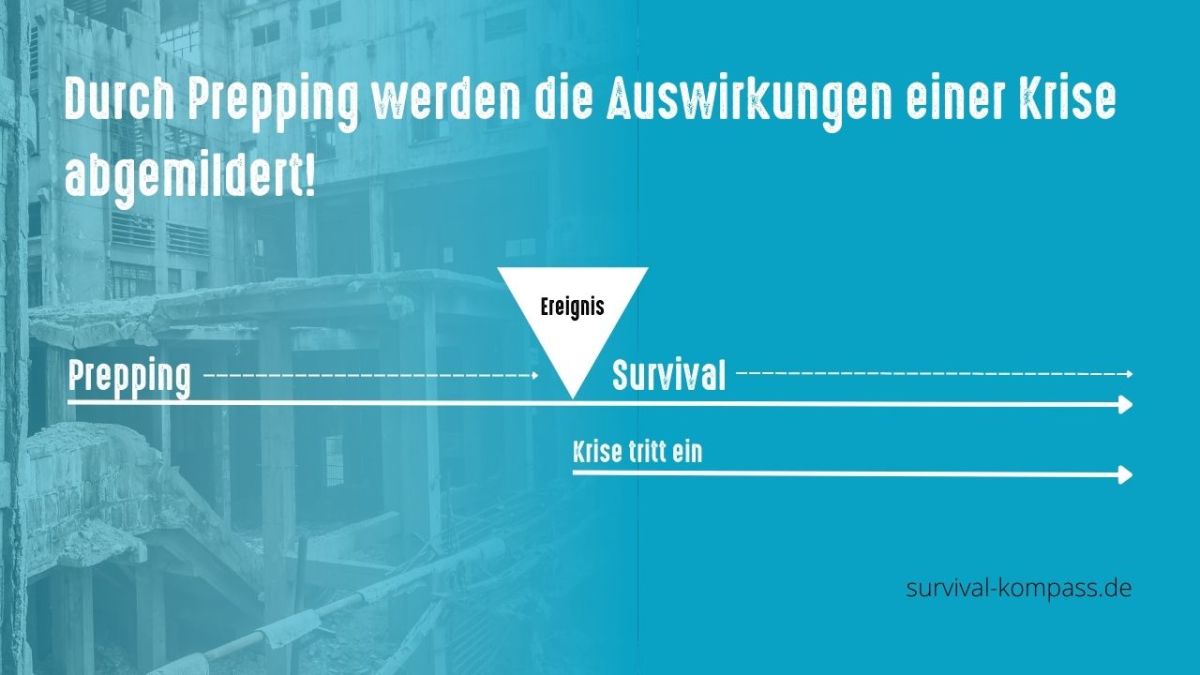
Primary school children - playful involvement
If you have a primary school child, usually from 6 or 7 years old, it's similar.
Here, too, the playful involvement of the child is still the focus.
However, depending on the maturity and age of the child, you can start to explain the reasons for the games and exercises a little more precisely.
You can also start teaching your child the first survival techniques (What is survival? Read the ultimate guide here) if you haven't already.
But please keep in mind that most of it should still be in a playful setting. The goal is not to paralyze the child with fear, but to give them useful skills and knowledge in an age-appropriate way.
Teenagers - full immersion
You can already fully involve a teenager in possible emergency plans and your prepping activities if you wish.
Remember that while you bear the main responsibility for your family, you are rarely alone in being able to handle the challenges that arise when SHTF.
An instructed teenager who combines youthful energy and corresponding fitness with prepping knowledge is a valuable member of the group.
Escaping with Children is Tricky, but Achievable with Good Preparation
As you have noticed, when preparing with children in your four walls, the focus is generally on having sufficient supplies and involving the child as much as possible in all necessary processes.
While this can occasionally be a challenge, it should be manageable for everyone.
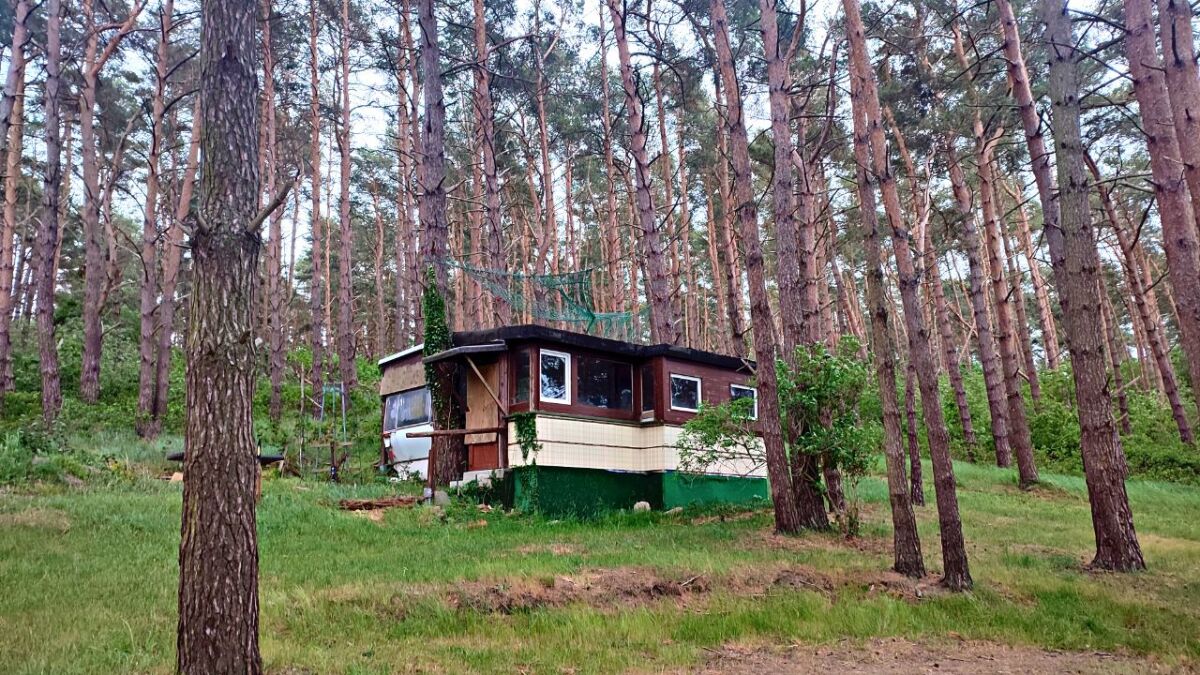
If, on the other hand, you plan to flee with your children to a bug-out location (Read here what a bug-out location is) or similar, it can look entirely different again.
Depending on your child's age, it will be immensely more difficult for you to reach your safe haven unscathed. But you can still make it happen, and here's how.
However, since three specific aspects have a greater impact than on your four walls, this section is divided again into:
- Mobility
- Safety
- Fear and Comfort
Read also
The complete guide to bug-out locations and how they help you survive a crisis - Learn in detail what a bug-out location is and how to set up your safe haven. Being prepared is the foundation of prepping and survival.
Mobility is Essential and You Can Overcome this Challenge
Mobility is probably the most difficult challenge when you want to flee to a safe place with your children.
Especially if you are forced to travel on foot, it can be difficult.
Depending on the physical condition of the child, the circumstances can be correspondingly difficult, which you should be prepared for.
You are disadvantaged with infants and preschoolers
Let's face it: with infants and preschoolers, you are strongly disadvantaged in terms of mobility during a flight.
This applies primarily if the infant cannot take a step on their own yet. In this age group, the child will probably have to be carried most of the time in one way or another.
Therefore, get an appropriate carrier that allows you to move easily through unpleasant terrain - primarily with a toddler on your back or in front of your chest.
Teach your child to stand on their own as soon as possible, literally.
The faster your child can walk independently, the sooner you will be relieved and be able to move around more freely.
Of course, you will still progress slower than usual, but you can't change that.
Read also
11 Serious Emergency Preparedness Tips Everyone Should Know - Being prepared is important for a crisis or disaster. Here are 11 essential tips that every person, with or without a family, should know.
It's better with elementary school children
In this age group, your child can usually stand on their own and move around on foot.
However, you should have a carrying option available, as little feet can quickly become tired, especially on longer distances. This can be, for example, a cart or a sled in snowy conditions.
It is important to get your children used to longer distances without a motorized vehicle in advance, ideally.
Organize hikes, runs, or even bike tours with your family to strengthen the endurance and perseverance of your youngest and to prepare them for exceptional situations. To help you with this, I have listed many great outdoor ideas for families here.
Furthermore, breaks should not be neglected. No matter how much you train with an elementary school child, they will not yet have the endurance and stamina of an adult. Plan breaks carefully.
Teenagers are mobile and independent
There are no such restrictions to be feared with teenagers during a flight. Generally, they are mobile and capable of carrying their luggage (such as the bug-out bag) the entire way.
However, make sure that the teenager receives a suitable carrying option, such as a backpack, that doesn't become too uncomfortable over time.
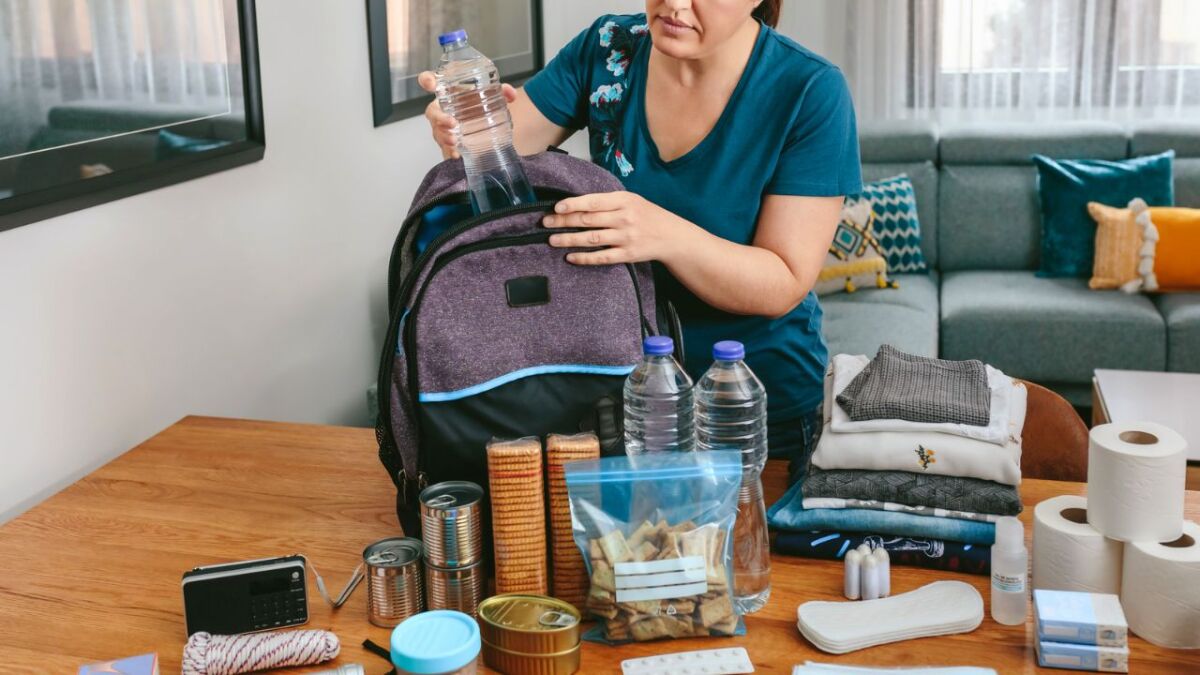
Safety during a flight has top priority
Safety here means that you want to ensure that your children arrive safely and unharmed at the bug-out location.
Each age group carries its risks and opportunities, which you must consider.
Infants and preschoolers unfortunately pose a safety risk
I hate to say it, but infants can become a safety risk in the event of a crisis. So plan particularly well here.
If the little one is hungry, thirsty, or has a full diaper, it will likely cry. What may only be stressful in today's everyday life can pose a risk in case of an emergency.
So be prepared to meet your child's needs as quickly as possible so that it doesn't get lost in childish screams.
Another option is to teach your offspring to make themselves known without using words or noise when a need must be met.
This may not work with an infant yet, but over time, as the child grows older, it is capable of learning such things.
For example, it should nudge you and give you a sign when it is hungry or thirsty, or when it is cold.
In general, you must do your best to satisfy your child quickly.
You should also teach your offspring to protect themselves from the elements.
If you are on your way to your bug-out location, the weather, depending on the season, can thwart your plans. Always explain to your child which clothing is suitable for which weather conditions.
When the child has understood the reason for wearing certain clothes, it will resist less against protective but uncomfortable clothing and wear it even when it doesn't feel like it.
Elementary school children can be well integrated
For children in this age group, two things can be particularly dangerous: boredom and a lack of understanding of the situation.
At this stage of life, little ones like to talk all day long and make it obvious when they are bored.
This becomes particularly dangerous when they can't estimate the current risk at all.
For this reason, you should start explaining the current situation to your offspring as best as possible in good time.
You won't be able to explain all the details, but there should be certain basic knowledge that helps the child to assess its surroundings correctly.
At the same time, it is necessary to convey to your child a feeling of safety to avoid fear and panic (How to deal with it?).
Talk to it about the situation and assure it that you will always protect it from danger and that it has nothing to fear.
As preparation, you should teach your children basic safety rules and skills, such as an introduction to first aid or orientation.
Practice with your child by having it remember noticeable points in its surroundings and telling you something about them. This way, your child will remember and use this technique even in exceptional situations.
As your child gets older, you can challenge them through exercises. Playfully practice hiding and quickly but safely reaching certain locations.
As mentioned in previous sections, you can already prepare your children excellently at this age. Integrate certain survival skills into everyday life, and you will see that the skills of the whole family improve.
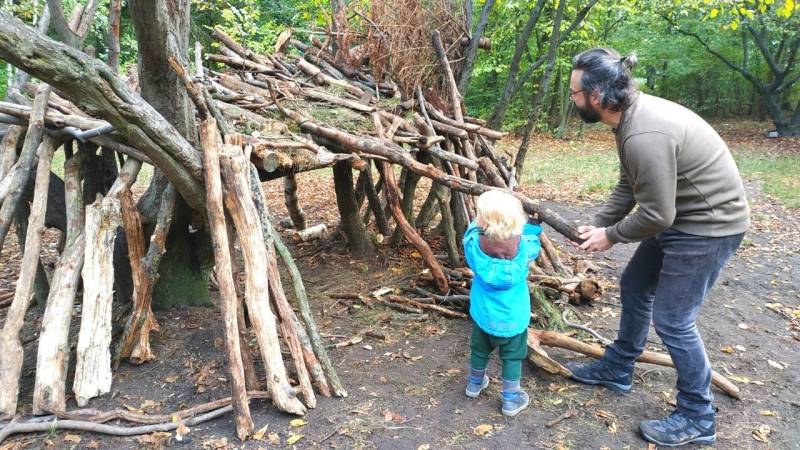
You can trust teenagers more
You can primarily influence the aspect of safety with teenagers through preparation and communication.
Make sure your child knows the escape plan and the alternatives, understands the reason for your actions, and knows the priorities.
You can definitely trust a teenager more than, for example, an older elementary school child. Explain to your child how to navigate properly, for example, using a map and compass.
After all, it is not unlikely that a teenager no longer has these skills – today, almost all orientation is done through digital navigation and GPS.
It is also important that children in this age group know all important places and contact information in the immediate area.
This way, your child can quickly find help or a safe location in an emergency. Make sure they can survive alone temporarily if you are separated.
Therefore, at least the basics of survival skills should also be available here. Find my top survival skills here that everyone should know.
The better a teenager can fend for themselves, take on tasks while fleeing, and consciously keep an eye on their surroundings, the more valuable their contribution to the community and the lower the security risk.
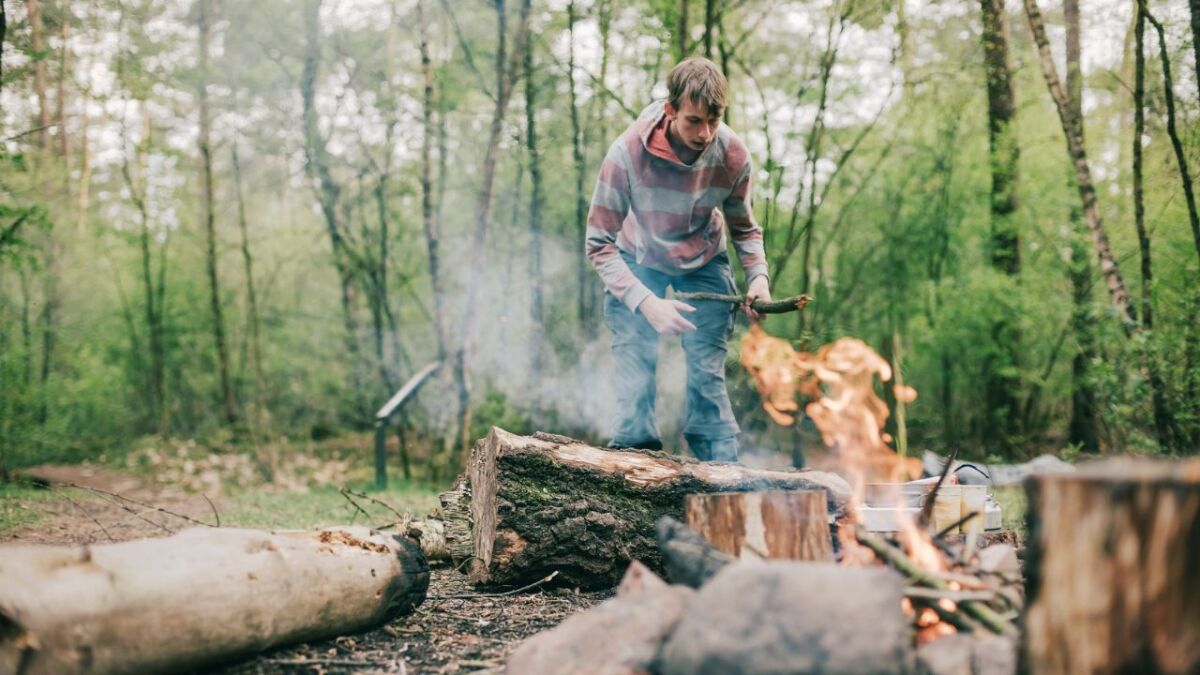
Fear and comfort in a crisis: as a parent, you should be a rock in the surf
Children, primarily in younger age groups, are still very sensitive to impressions in their environment and more susceptible to traumas.
Perceived fear and necessary comfort are often underestimated aspects that rarely receive the attention they deserve.
However, ignoring these points can have fatal consequences for your children and yourself.
Infants and preschoolers need security
Let's start directly with the most sensitive age group, which is particularly sensitive to their environment and emerging ambient noise.
Unfortunately, this is also where the problem lies because you can imagine the noise level that will prevail when SHTF.
Screams, shots, sirens, possibly explosions, and other banging noises - your very young child is currently exposed to all of these.
It cannot yet classify this immense noise level, which is why there is a possibility that it will react with fear and screaming on its part. Unfortunately, in this age group, you can only partially explain the noises and take away the fear.
You should focus on the possibilities that can provide your child with protection from loud noise.
This includes, for example, earplugs (buy here or here on Amazon) or other sound-dampening headphones (buy here on Amazon).
Another possibility is to only set off when everyone else is asleep, usually at night.
However, sudden screaming from your child can also be a problem here, as it may reveal your location immediately and make you visible to hostile groups or looters.
You can also try to calm your child down by singing a quiet song or playing some music yourself.
If you have a baby or a child with you who cannot go to the toilet independently yet, you also need to have a plan for this.
Although this has little to do with the child's mental well-being, it has a lot to do with their physical well-being. After all, you cannot let your little one walk around with a dirty diaper all the time.
So, plan when and where you can change the diapers and make sure your child stays as clean as possible, even though it may not be easy during an escape. Otherwise, you risk infections that could endanger both your child's and your life.
Primary school children want to talk
Primary school children usually cannot fully understand what is happening around them, but they often do understand that something is not right.
Given this, it is all the more important for children of this age group to talk about it with them when the opportunity arises.
Distract them if possible. Keep a pair of headphones for your child around, so that in case of an emergency, they can listen to some music/audio plays and distract themselves. Mobile video games, puzzles, coloring books or other activities can also help distract and calm the child.
If your child has a favorite shirt, stuffed animal or blanket, keep it with you. Such things can give children of this age group a sense of comfort to get through the current situation.
Teenagers may overestimate themselves, but can be helpful
The teenage years bring both advantages and disadvantages when it comes to fleeing. On one hand, your child is well aware of the existing situation and danger, but on the other hand, teenagers often feel invincible and immortal.
Overconfidence is a risk that you should definitely keep an eye on and prevent if necessary.
Your child should pack the bug out bag independently at this age, although it certainly doesn't hurt to check it again afterward. Make sure your child has everything they need and feel safe with.
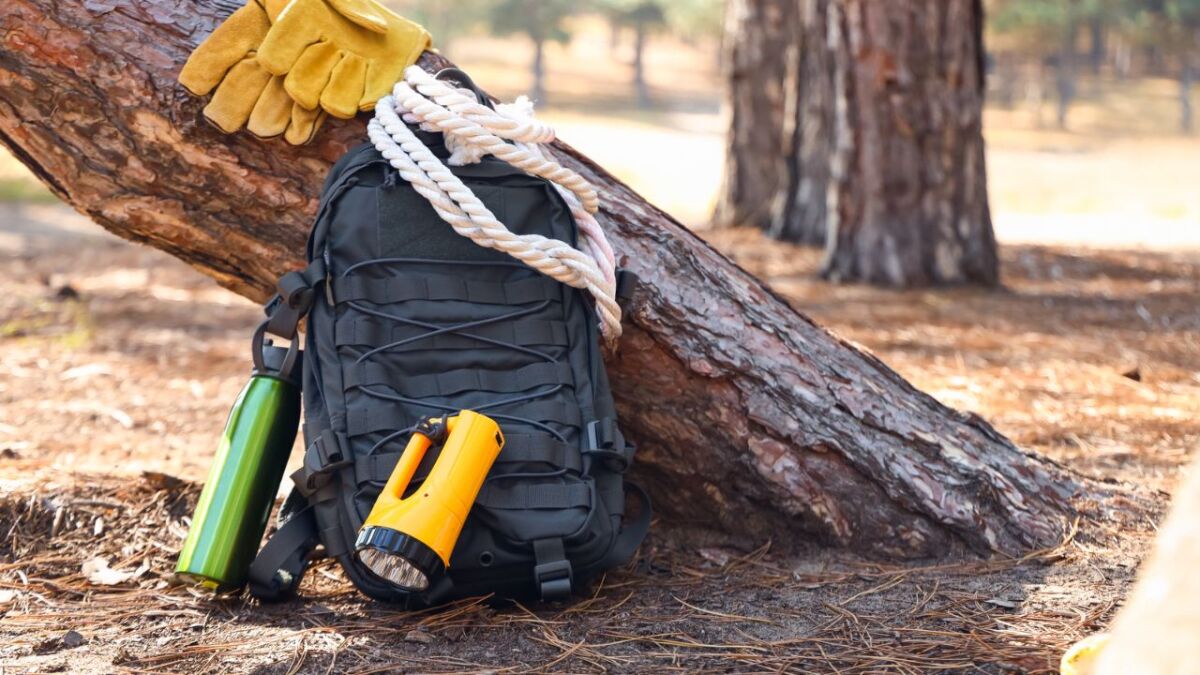
Here is a list of important supplies you should have on hand when fleeing with children
Infants and preschoolers
Hey there, dear parents, have you ever thought about what you need to supply your little ones within a crisis?
It may sound like a tiresome task, but trust me, it's better to be prepared.
You would rather not be in a situation where you have to worry about your children's basic needs.
Here are some things you should have on hand for infants and preschoolers:
- Baby food in jars or powder form: If your babies can not yet consume solid food, it is important to store enough food in a form that is long-lasting and does not require refrigeration.
- Clean bottles as containers for baby food: Don't forget to provide enough clean bottles for storing and feeding baby food.
- Diapers: Without diapers, things can quickly become uncomfortable. Make sure to store enough diapers for your little ones in various sizes.
- Spare clothing: Whether it's over spilled milk or unforeseen accidents, it's always good to have spare clothing on hand for your children.
- Medicines for young children: Do you have medicines for fevers, colds, or pain in your first aid kit?
- Pipettes and syringes: Pipettes and syringes are useful for precise dosing of medication and administering liquids.
- Pacifiers: If your babies need pacifiers, it's important to store enough backup pacifiers.
- Carrier devices: A carrier device can be useful for safely transporting your little ones in a crisis.
- Protective clothing for all weather conditions: Whether it's raining, snowing or the sun is shining, it's important that your children always be appropriately protected.
- Sealable containers: In a crisis, it can be difficult to dispose of diapers. Sealable containers can help to reduce odors and improve hygiene.
- Electrolytes: Electrolytes are important for regulating children's electrolyte balance and providing them with essential nutrients.
- Sugar, powdered milk, coconut oil and other ingredients: If there is no baby food or milk available, sugar, powdered milk, coconut oil and other ingredients can be used to make "emergency nutrition".
- Dietary supplements: to prevent nutrient deficiencies during food shortages
- Toys: Even in a crisis, children need to be able to play and keep themselves occupied to promote their development. So please remember your children's toys to keep them entertained.
- Multivitamin supplements for nursing mothers: Nursing mothers should make sure they are getting enough vitamins and minerals to maintain their milk production and provide their baby with essential nutrients.
Also read
Prepping on a Small Budget (with Little to No Money) - How to Get Started - Is there a power outage or other crisis? Emergency preparedness doesn't have to cost a lot. Prepping is about getting started before it's too late.
Elementary School Children
- Snacks: Make sure you have enough snacks on hand to keep your children happy and energized.
- Spare clothes and shoes: Spare clothes and shoes can be useful if your children get wet or dirty, or if they simply want to change their clothes.
- Extra pairs of warm socks: In a crisis, it can quickly get cold, so it's important to have extra pairs of warm socks on hand.
- Weather-appropriate protective clothing: Protective clothing such as rain jackets or snowsuits are important to keep your children warm and dry in bad weather.
- Favorite stuffed animal, t-shirt, or blanket: Your children probably need their favorite stuffed animal or a familiar blanket to feel safe and secure.
- Toys and entertainment options like books: Toys and books can help keep your children entertained and stimulate their imagination.
- Child-friendly backpack: A child-friendly backpack can be useful for carrying things like toys and snacks.
- Flashlight or headlamp: A flashlight or headlamp can be helpful for seeing in dark environments.
- Child-sized protective mask: A child-sized protective mask can help keep your children healthy in a crisis.
- Whistle or signal mirror: A whistle or signal mirror can be useful for attracting attention or signaling for help.
- Important contact information: Make sure you have important contact information for friends, relatives, or other important people.
- Glow sticks: Glow sticks can be useful for being seen in the dark and feeling safer.
- Family photos: Family photos can help comfort your children in a difficult situation and remember positive memories.
- Candy: Candy can keep your children happy and be a small comfort in difficult situations.
- Children's medications: Make sure you have enough medication on hand to care for your children in a crisis. Find here 6 medications you should always take with you.
- Pens and paper: Pens and paper or a coloring book can help keep your children creative and occupied when other entertainment options are limited.
- Hygiene products: Hygiene products such as toothbrushes, toothpaste, and wet wipes are important to keep your children clean and healthy.
- Ready-to-eat meals: Ready-to-eat meals (such as MREs) can be useful for quickly and easily providing your children with food when there is no way to prepare fresh food.
- Games that don't generate loud noises: Games that don't generate loud noises can help keep your children quiet and occupied without disturbing others in their environment.
- Change of clothes and footwear: Your teenagers will appreciate having clean and dry clothes and shoes on hand in a crisis.
- Protective mask: A protective mask is important to keep your teenagers healthy in a crisis.
- Map and compass: A map and compass can be useful to navigate in an unfamiliar environment. Find my guide here on how to use a map and compass.
- Whistle and signal mirror: A whistle or signal mirror can help your teenagers attract attention and call for help.
- Tools for starting a fire: Tools like flint and fire starter are important to ignite a fire and keep warm in a crisis.
- Knife: A knife can be useful for cutting things like food and wood. Here are my top bushcraft knives.
- Family photos: Family photos can help your teenagers feel secure in a difficult situation and remember positive memories.
- Emergency contact information: Make sure you have important contact information for friends, relatives, or other important people stored.
- Identification documents: Important identification documents such as passports and driver's licenses should always be readily available.
- Spare phones, radios, small radio: Spare phones, radios, and radios (here is my top list) can be useful to stay in touch and receive important information.
- First aid kit: A first aid kit is important to treat injuries and illnesses in a crisis.
- String and materials that can be used to build a shelter: String and materials such as tents or tarps can help keep your teenagers protected in bad weather.
- Ready-to-eat meals: Ready-to-eat meals (such as MREs) can be useful to quickly and easily provide your teenagers with food when there is no way to prepare fresh food.
- Hygiene items: Hygiene items like toothbrushes, toothpaste, and wet wipes are important to keep your teenagers clean and healthy.
- Entertainment options like games or books: Entertainment options like games or books can help keep your teenagers occupied and in good spirits in a crisis.
- Water filter: A water filter is important to have clean drinking water available in a crisis. Here is my buying guide for that.
- Filled water bottles: Filled water bottles should always be readily available to provide your teenagers with enough fluids.
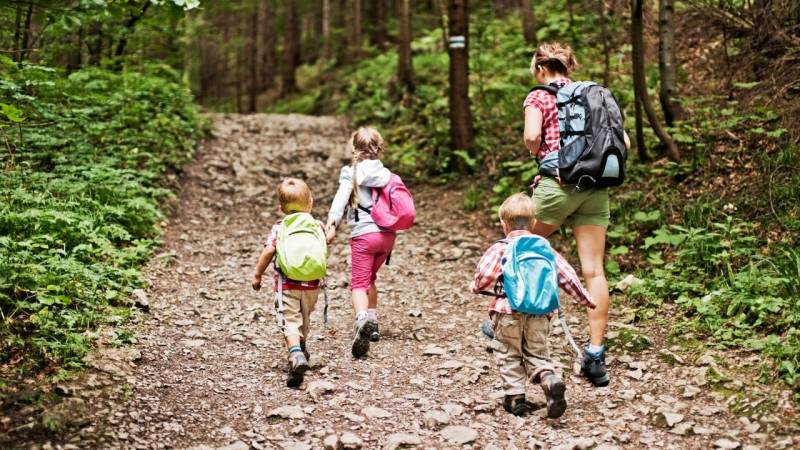
Conclusion: Without preparation, it is even harder with children
While children can pose a challenge in a crisis, the earlier you start with the preparations, the less challenging it will be.
As you have read, everything (as it should be with prepping) depends on preparation.
In the best-case scenario, you prepare your children for an SHTF scenario before it even comes into view.
And even if that is not possible because your child was born shortly before it started, you prepare yourself for this exact challenge.
Make all the preparations as soon as you know your child is soon to arrive. You can never know, and you want to make sure that your entire family is prepared and will come out of any disaster unscathed.
The better you have prepared yourself, the easier it will be to involve your children.
Once you have adopted the prepping mindset, you will automatically transfer it to your children and take their worries and needs into account.
So start with yourself now to ensure the safety of your children, regardless of what age, when SHTF.


Author of the guide
Martin Gebhardt
Hey, I'm Martin. On my blog, you will learn the basics and numerous details about living in the wild. I think survival, bushcraft and the good life in nature are the keys to happiness. Find me here on Instagram or on YouTube. You can find more about my mission on the About Me page.
Was this guide helpful?
14 people found this guide helpful.
5.00 out of 5 points (14 Ratings)
Comments (0)
This post may contain affiliate links. So if you click on the links and make a purchase, I will receive a small commission at no additional cost to you. Click here, to learn more about it.



